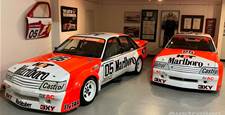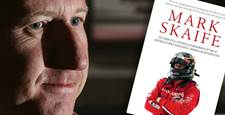If Elite Motor Racing Drivers aren’t athletes, why don’t we ever see any podgy ones?
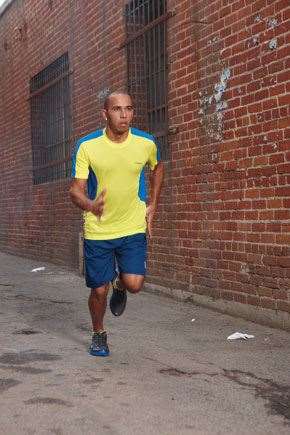 Main Image by Getty Images, Others Courtesy of Reebok
Main Image by Getty Images, Others Courtesy of ReebokWINTER WARMERS
“In the winter we’re training a good four hours a day, which might be made up of a two to two and a half-hour cross-country ski or a three-hour hike, then we’ll go into the gym for an hour to an hour and a half. In the gym we do a lot of abdominal work, which I hate. We do quite a lot of pull-ups, dips, plank ... again, a lot of stuff for our core stability ... Sitting down, having the medicine ball thrown at you and catching it in different areas.”
BANGED UP
“Sometimes you are massively spent after a race, other times you aren’t. There have been races I have won where I feel I could go another race! Sometimes I’m just dead. Malaysia, for example; it’s just massively hot, humid, crazy. You’re in thermal underwear to your neck and also gloves, a twin-layered suit, a two-layered balaclava, then a helmet. You’re in a cockpit, which is like a sauna ... you sweat buckets.
“You generally take a day or two to recover after a race before getting back into it again. You do recovery runs, or a good swim to burn
off the lactic acid.”
FEELING THE FORCE
“You’re safely strapped into the cockpit in the car, but the thing is, the forces you are put under are ridiculous. When we’re talking about ‘G forces’, for us, it’s a multiple of our body weight. Under braking, when you’re in the car, you can hit the brakes with all your might and the car will not lock up. You can hit the pedal so hard, that all your body weight shoots forward. You’re hitting six Gs; that’s six times the weight of your head and the rest of your body. All this requires high strength. You get bruises the first time you’re back in the car after a winter, but also when you’re going through corners ... When you’re going through a right-hander, you have to keep modulating the throttle, but the weight on your leg is still immense because you’re pulling five Gs. The weight on your arm is immense because you’re pulling five Gs, and the same for the rest of your body.
“You need the strength to be able to cope with this force and hold it solid. You have 15-25 corners per lap and you do that God knows how many times ... 65 times. It’s just non-stop. When you reach the straight, you’re able to have a ‘breather’, but the straight doesn’t last long ‒ only a couple of seconds.”
HEAD-STRONG
“You can imagine the stress all this puts on your head and neck, so to strengthen my neck, I have a spare helmet and I’ll put 10kg on the top of it and lay off the end of a bench press or a bed and do lots of repetitions of head and neck movements. Sometimes my trainer will sit on my legs and I’ll lift my head and then lift – from the hip up – my upper body. There is another version of this exercise, but it’s front-on. My trainer will tell me to lift my
head up and then hold that position – for two minutes with 10kg on my head. You wouldn’t believe how tough it is on the muscles. Those neck exercises are the hardest ones.
“I don’t have this problem any more, but when I first started out in Formula One, I’d
get to the middle or three-quarters of the
way through a race and I’d be really struggling to hold my head up − it’s that demanding on your neck.”
Related Articles
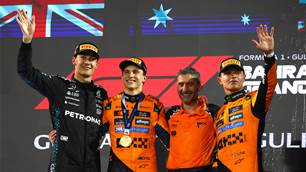
Gallery: 2025 Bahrain Grand Prix
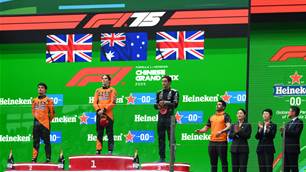
Gallery: 2025 Chinese Grand Prix





